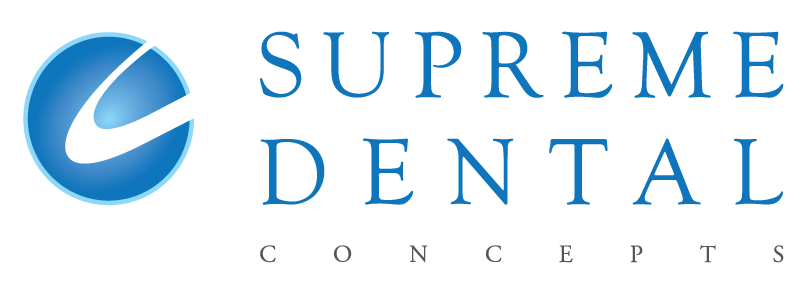Wellington:
(04) 801 6228
Lower Hutt:
(04) 570 0520
Our airway health is often taken for granted until we experience issues like snoring, sleep apnea, or difficulty breathing. While most of us focus on the lungs or nasal passages when considering these problems, there's an often-overlooked contributor: our teeth and the oral environment. The link between oral health and airway function is profound and can impact our well-being in the long term.
The mouth is more than just a gateway for food; it's a critical part of our airway. The alignment of our teeth, the structure of our jaw, and even the health of our gums can directly influence how well we breathe. When things go wrong in the oral environment, it can lead to serious airway issues.
Maintaining a healthy oral environment is not just about avoiding cavities and gum disease; it’s about ensuring proper airway function. A compromised airway can lead to sleep-disordered breathing, which affects everything from energy levels to cardiovascular health.
Correcting airway issues influenced by the teeth and oral environment often requires a multidisciplinary approach.
For parents, it's critical to watch for early signs that a child’s oral environment may lead to future airway issues. Symptoms like mouth breathing, frequent snoring, or grinding teeth can indicate an underlying problem with the airway. Regular dental check-ups can help spot these issues early and guide you toward appropriate interventions.
The connection between our teeth, oral environment, and airway health is often underappreciated but essential for overall well-being. We can promote healthier breathing and prevent long-term health by ensuring proper alignment of the teeth and jaw, maintaining good oral health, and addressing any issues early on. The next time you think about your dental health, remember that your ability to breathe easily may depend on it!

Myobrace has emerged as a popular alternative to traditional braces and aligners in orthodontics. But the burning question remains: Does Myobrace really work? Let's investigate this topic and uncover the truth behind Myobrace's effectiveness.
What is Myobrace?
Myobrace is a preventive pre-orthodontic treatment primarily aimed at children aged 3 to 15. It focuses on correcting poor oral habits known to be the underlying cause of crooked teeth. Unlike braces, Myobrace is not worn all the time but just for 1-2 hours each day and overnight while sleeping.
How Does Myobrace Work?
The Myobrace system uses a series of removable dental appliances that target the root causes of crooked teeth, often without the need for braces or extraction. It works by:
The Effectiveness of Myobrace
Several studies and clinical trials have suggested that Myobrace can be effective in some instances, especially for children. The key findings include:
Who Benefits Most from Myobrace?
Myobrace is most effective for children between 3 and 15, as it works best when the jaws and teeth are still developing. Early intervention can lead to better outcomes.

Pros and Cons of Myobrace
Pros:
Cons:
The Bottom Line
Myobrace is a promising option for correcting dental and jaw alignment issues in children, particularly when started at a young age. It's not a one-size-fits-all solution and may not replace traditional orthodontics in all cases. However, for those it suits, Myobrace offers a less invasive and more holistic approach to dental alignment.

As parents, we all want the best for our children, especially when it comes to their health and well-being. One key aspect of this is their dental health, particularly as they grow and develop. Orthodontic treatment can play a crucial role in ensuring a healthy, beautiful smile for your child, but knowing when to start can be a bit of a puzzle. In this blog post, we'll guide you through the optimal time to seek orthodontic advice for your children, ensuring their smiles stay bright and healthy right from the start!
The American Association of Orthodontists recommends that children have their first orthodontic check-up no later than age 7. Why so early, you might wonder? At this age, children have a mix of baby (primary) and permanent teeth. An orthodontist can spot subtle problems with jaw growth and emerging teeth while some baby teeth are still present.
Early detection of potential issues can lead to simpler, more effective treatment or even prevent the need for more extensive treatment later on.
Regular check-ups allow the orthodontist to monitor your child's dental development and intervene at the most opportune time.
Early intervention can guide jaw growth, potentially avoiding more invasive procedures like jaw surgery in the future.
Habits like thumb sucking or prolonged use of a bottle can affect your child’s dental alignment. Orthodontists can help address these issues early on.
While age is a guideline, there are certain signs that might prompt an earlier visit to the orthodontist:
If your orthodontist identifies a problem, early treatment doesn’t always mean braces. It could include:
If your child does need treatment, it will likely be timed in phases:
Seeking orthodontic advice for your child at the right time can make a world of difference to their dental health. It's not just about getting a beautiful smile; it’s about laying the foundation for a healthy mouth for life. Remember, starting early can lead to better outcomes, so brace yourself for an orthodontic journey that sets your child up for a lifetime of smiles!
By understanding the importance of early orthodontic evaluations and knowing what signs to look for, you can play a proactive role in your child’s oral health. It's not just an investment in their smile; it's an investment in their future. So, make that orthodontic appointment and take the first step towards ensuring a happy, healthy smile for your child!

